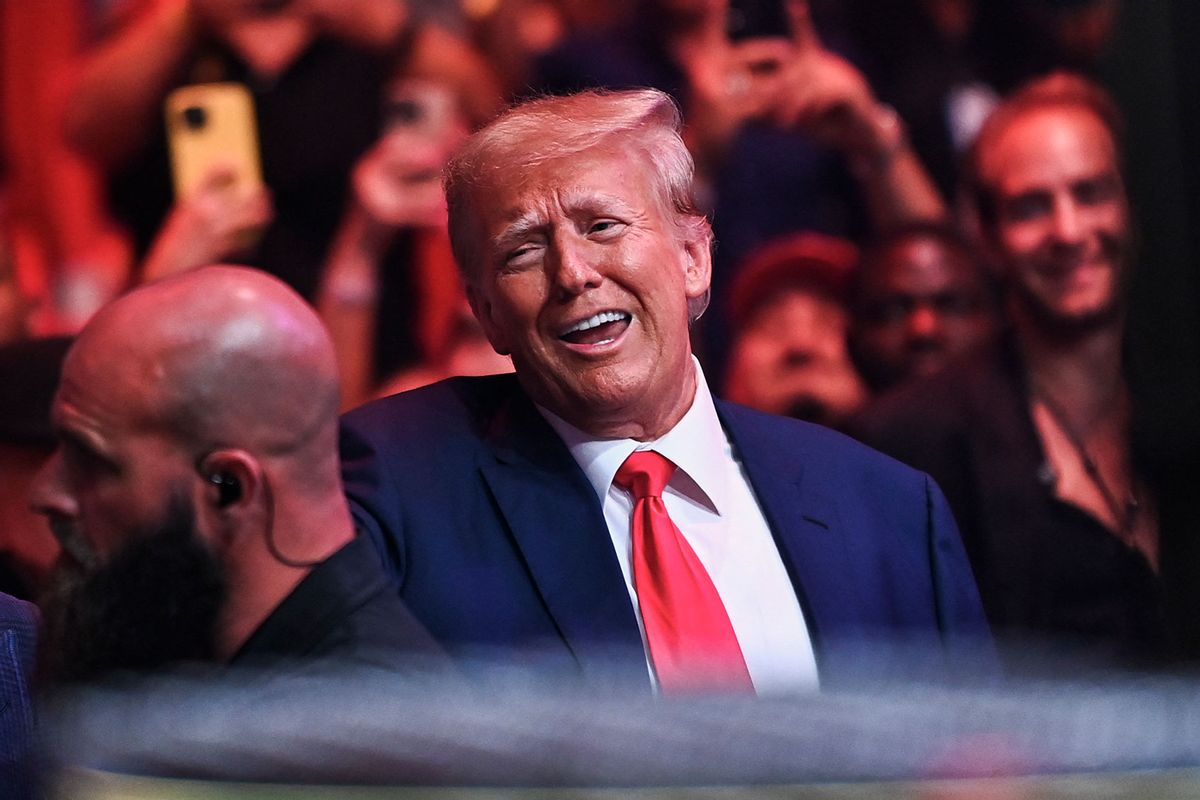Wall Street is pointing toward major losses on Monday, following enormous declines last week, as fears mount that US tariffs announced by President Donald Trump will slow global economic growth.
Oil prices sank again, briefly dipping below $US60 ($98) a barrel for the first time since 2021, with more investors anticipating that a trade war will chill global economic growth.
Futures for the S&P 500 tumbled 2.7 per cent in premarket trading on Monday, while futures for the Dow Jones Industrial Average slipped 2.4 per cent. Nasdaq futures fell 3 per cent. All three indexes recouped some of their overnight losses, when the S&P 500 was headed toward bear market territory — defined as a fall of more than 20 per cent from the peak. The index was off 17.4 per cent as of the end of last week.
The massive sell-off in riskier assets at the start of the trading week follows Trump’s announcement of sharply higher US import taxes and retaliation from China that saw markets fall sharply on Thursday and Friday.
Trump’s tariff strategy has long been criticised by economists, investors and business leaders, who fear that US isolation will severely limit economic growth.
“The recent tariffs will likely increase inflation and are causing many to consider a greater probability of a recession,” wrote JPMorgan CEO Jamie Dimon in his annual letter to shareholders Monday. “Whether or not the menu of tariffs causes a recession remains in question, but it will slow down growth.”
Tokyo’s Nikkei 225 index lost nearly 8 per cent shortly after the market opened and futures trading for the benchmark was briefly suspended. It closed down 7.8 per cent at 31,136.58.
European shares followed Asian markets lower, led by Germany’s DAX index, which briefly fell more than 10 per cent at the open on the Frankfurt exchange, but recovered some ground to move down 4.8 per cent in midday trading. In Paris, the CAC 40 shed 5.1 per cent, while Britain’s FTSE 100 lost 4.9 per cent.

On Friday, the worst market crisis since the COVID-19 pandemic shifted into a higher gear as the S&P 500 plummeted 6 per cent and the Dow plunged 5.5 per cent. The Nasdaq composite dropped 3.8 per cent.
“There’s no sign yet that markets are finding a bottom and beginning to stabilise,” wrote Deutsche Bank analysts in a research note.
Late on Sunday, Trump reiterated his resolve on his decision to introduce tariffs of 10 per cent to 50 per cent on goods imported into the US, a move seen as massively disrupting world trade and supply chains across borders. Speaking to reporters aboard Air Force One, he said he didn’t want global markets to fall, but also that he wasn’t concerned about the massive sell-offs, adding, “sometimes you have to take medicine to fix something”.
Trump posted on his Truth Social site early on Monday, blaming China and other “abusing countries” for retaliating against the US with additional tariffs.
Heavy selling kicked in after China on Friday matched Trump’s tariff, upping the stakes in a trade war that many fear could end in a global recession. Even a better-than-expected report on the US job market, usually the economic highlight of each month, wasn’t enough to stop the slide.
“The idea that there’s so much uncertainty going forward about how these tariffs are going to play out, that’s what’s really driving this plummet in the stock prices,” said Rintaro Nishimura, an associate at the Asia Group.

Chinese markets often don’t follow global trends, but they have also tumbled. Hong Kong’s Hang Seng dropped 13.2 per cent to 19,828.30, while the Shanghai Composite index lost 7.3 per cent to 3096.58. In Taiwan, the Taiex plummeted 9.7 per cent.
Asian economies are heavily exposed to Trump’s tariffs since they are dependent on exports, and a large share go to the United States.
“Beyond the market meltdown, the bigger concern is the impact and potential crises for small and trade-dependent economies, so it’s crucial to see whether Trump will reach deals with most countries soon, at least partially,” said Gary Ng of Nataxis.
US benchmark crude fell $1.57 to $60.42 per barrel. Brent crude, the international standard, gave up $1.53 to $64.05 a barrel. As with the larger sell-off, the drop was fueled by fears that the tariffs would slow economic growth. That would hit demand for fuel, and the drop comes after moves to increase production by the OPEC+ producers’ alliance.
Exchange rates also gyrated. The US dollar fell to 146.50 Japanese yen from 146.94 yen. The yen is often viewed as a safe haven in times of turmoil. The euro rose to $1.0955.
Nathan Thooft, chief investment officer and senior portfolio manager at Manulife Investment Management, said more countries are likely to respond to the US with retaliatory tariffs. Given the large number of countries involved, “it will take a considerable amount of time in our view to work through the various negotiations that are likely to happen”.

“Ultimately, our take is market uncertainty and volatility are likely to persist for some time,” he said.
The Federal Reserve could cushion the blow of tariffs on the US economy by cutting interest rates. That can encourage companies and households to borrow and spend. But Fed Chair Jerome Powell said Friday that the higher tariffs could drive up expectations for inflation and lower rates could fuel still more price increases.
Much will depend on how long Trump’s tariffs stick and how other countries react. Some investors are holding onto hope he will lower the tariffs after negotiating “wins” from other countries.
Stuart Kaiser, head of US equity strategy at Citi, wrote in a note to clients that earnings estimates and stock values still don’t reflect the full potential impact of the trade war. “There is ample space to the downside despite the large pullback,” he said.




















Discussion about this post